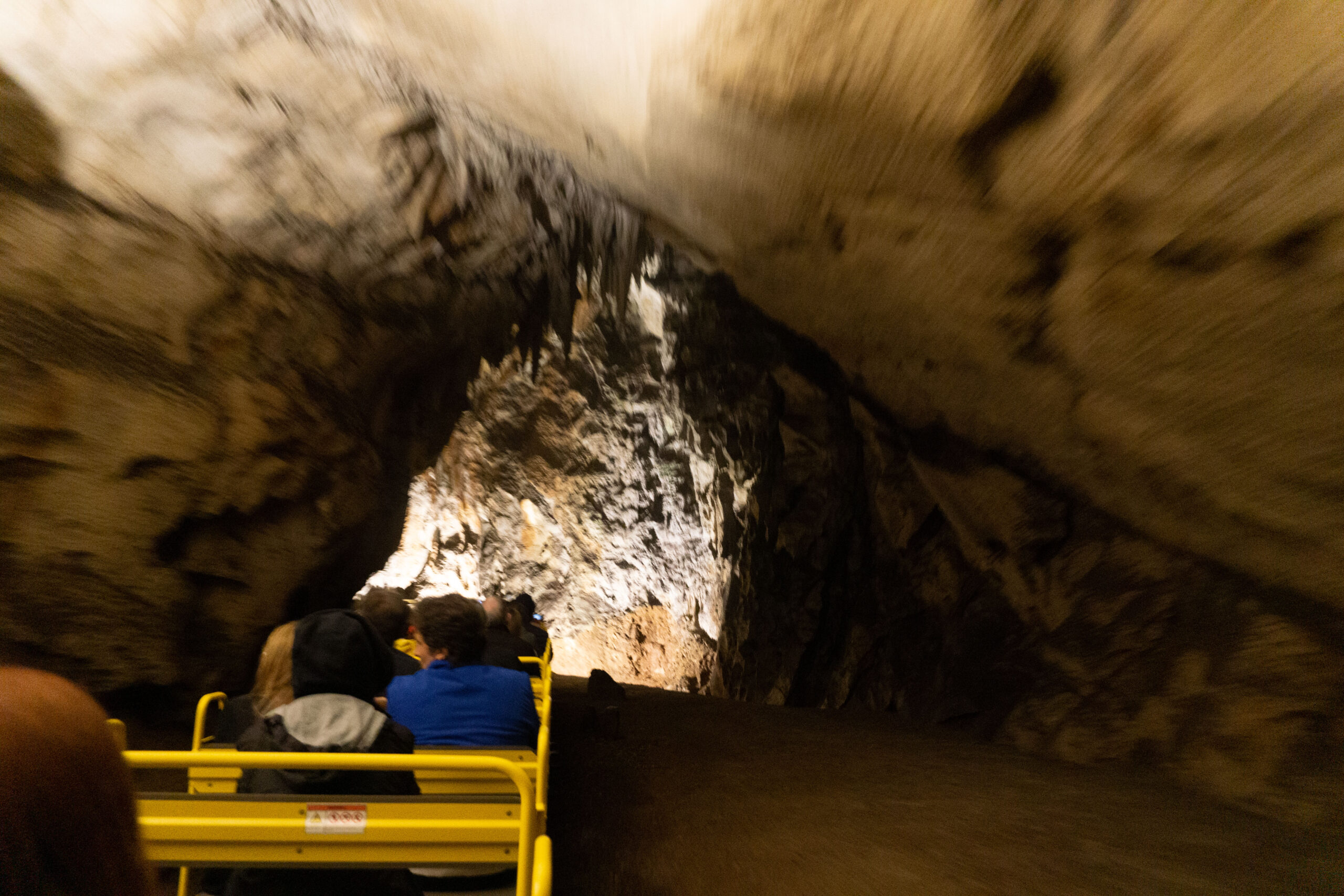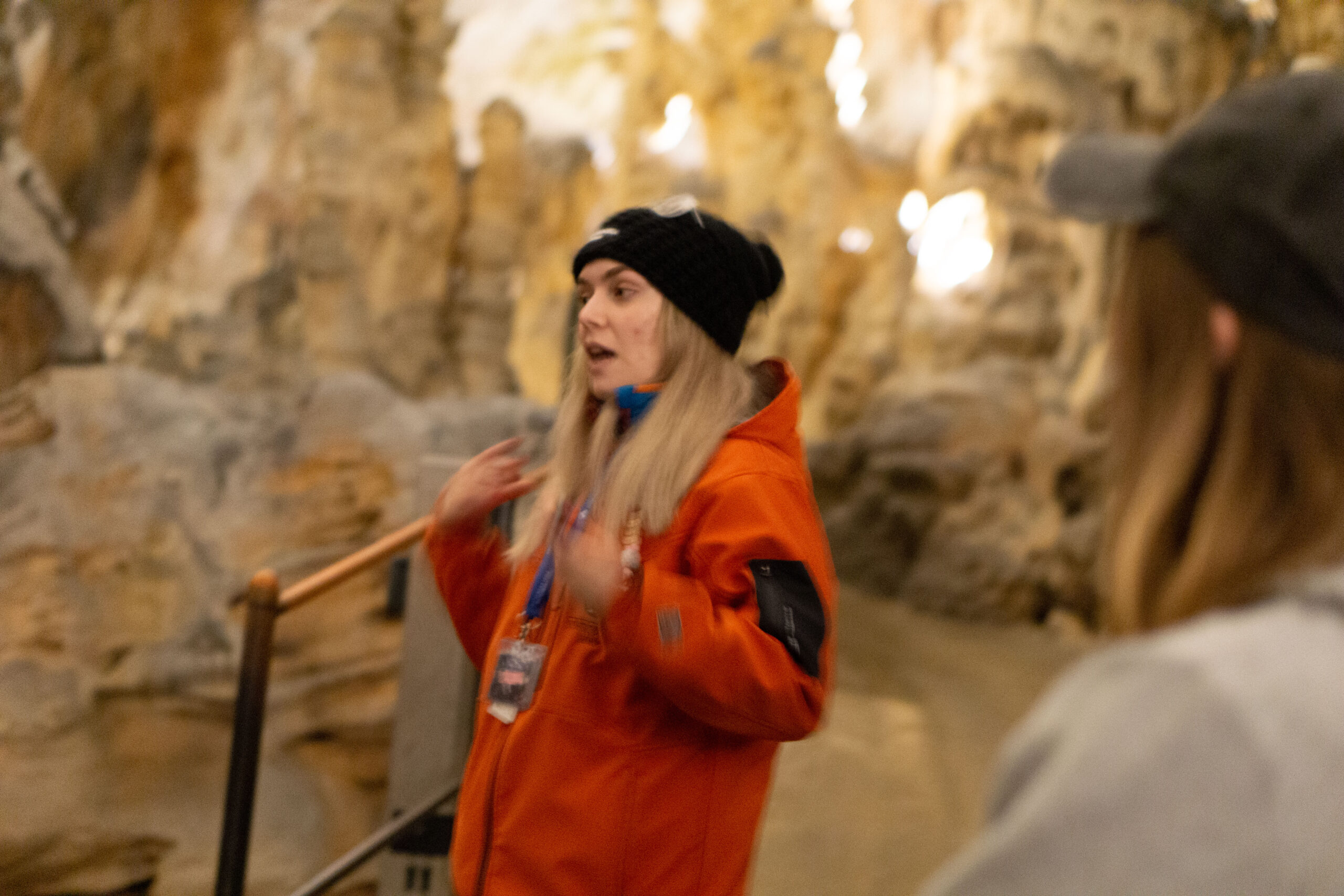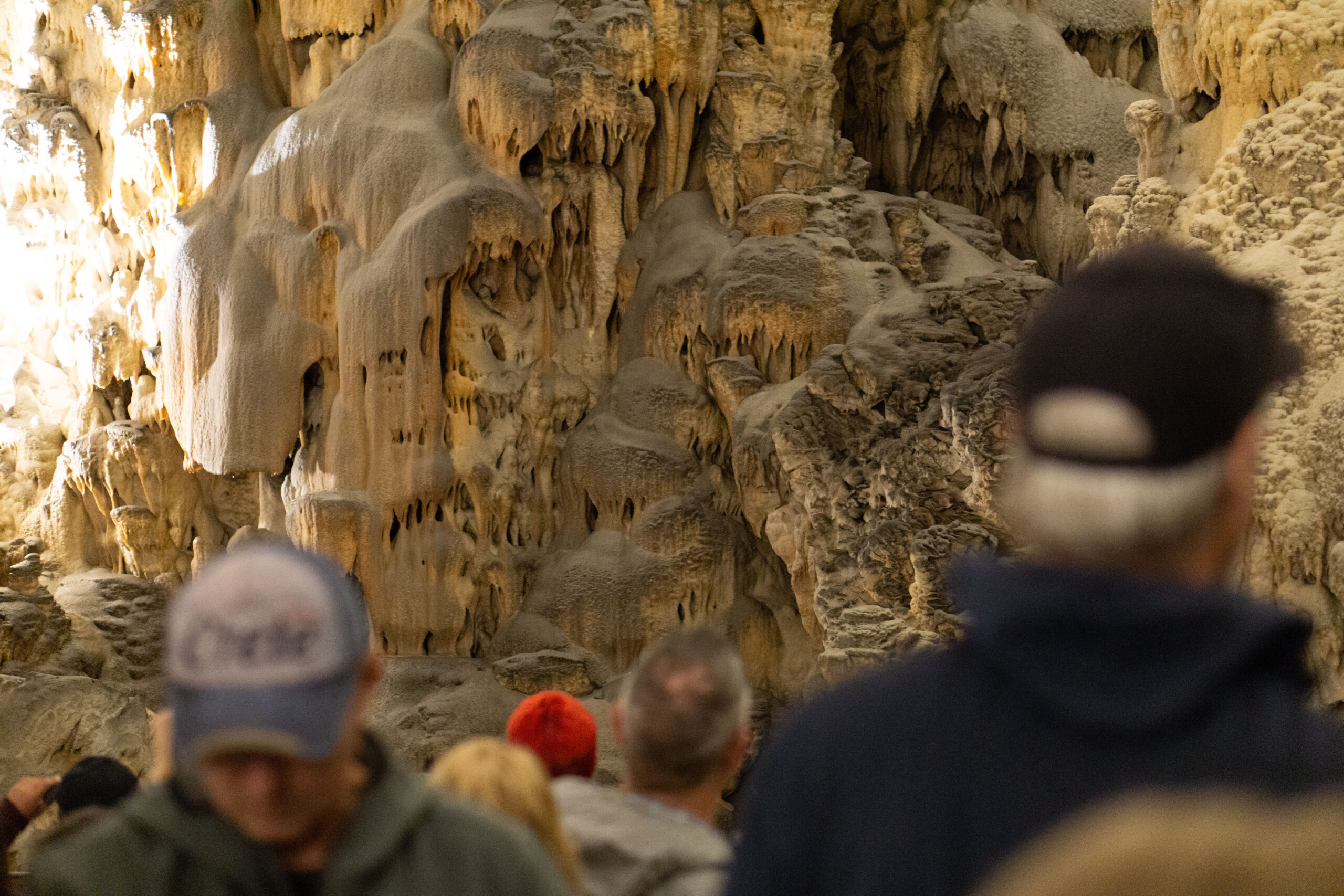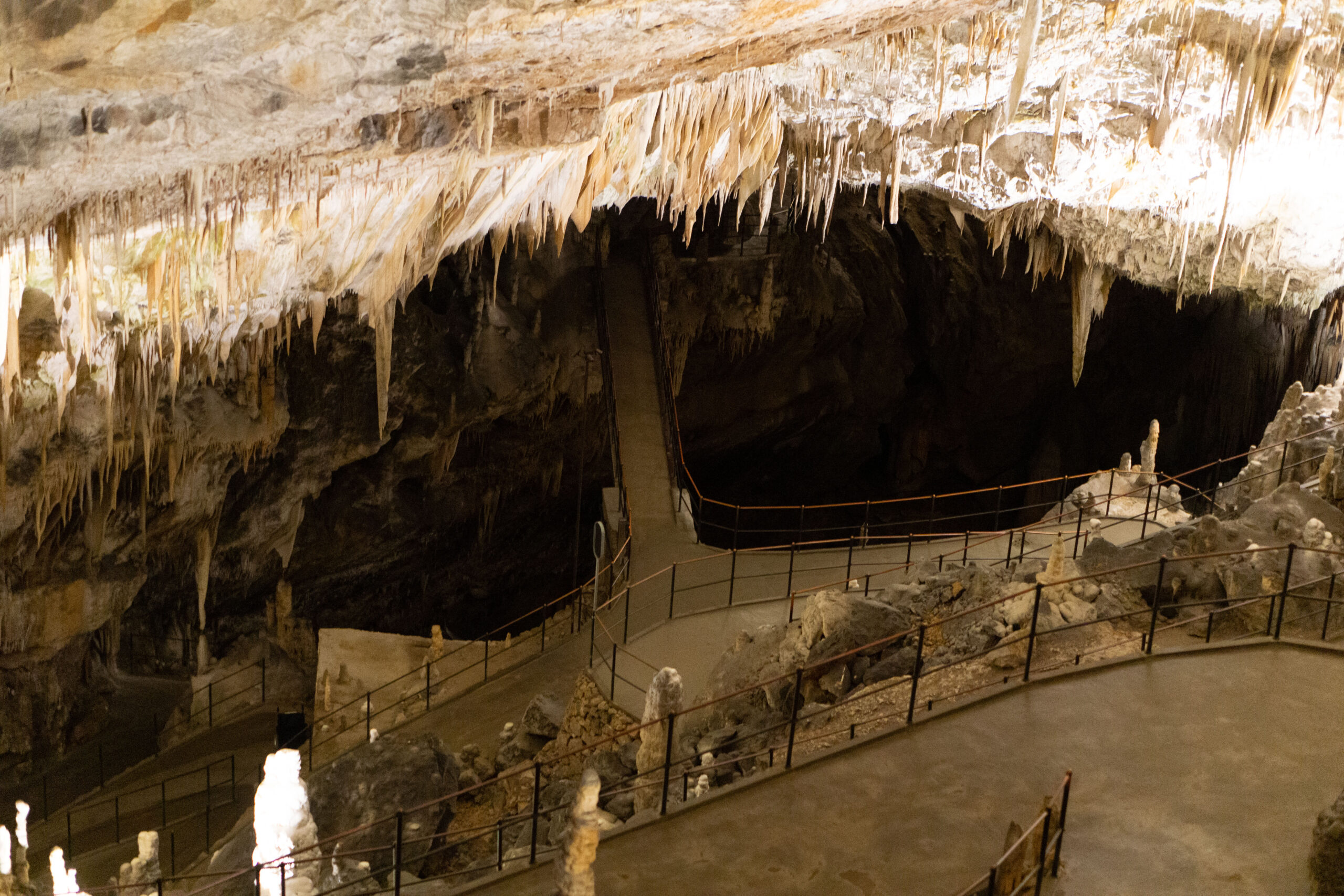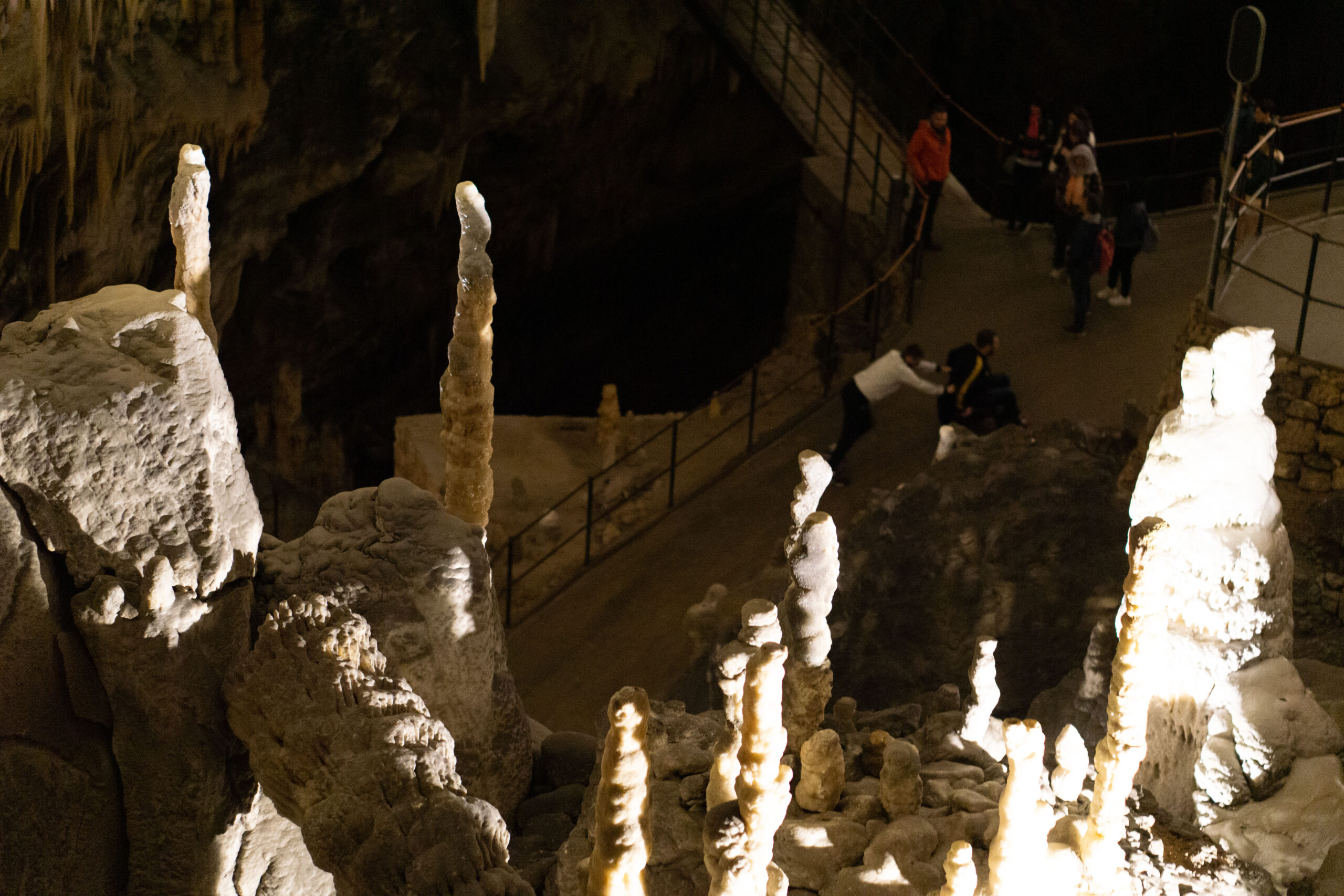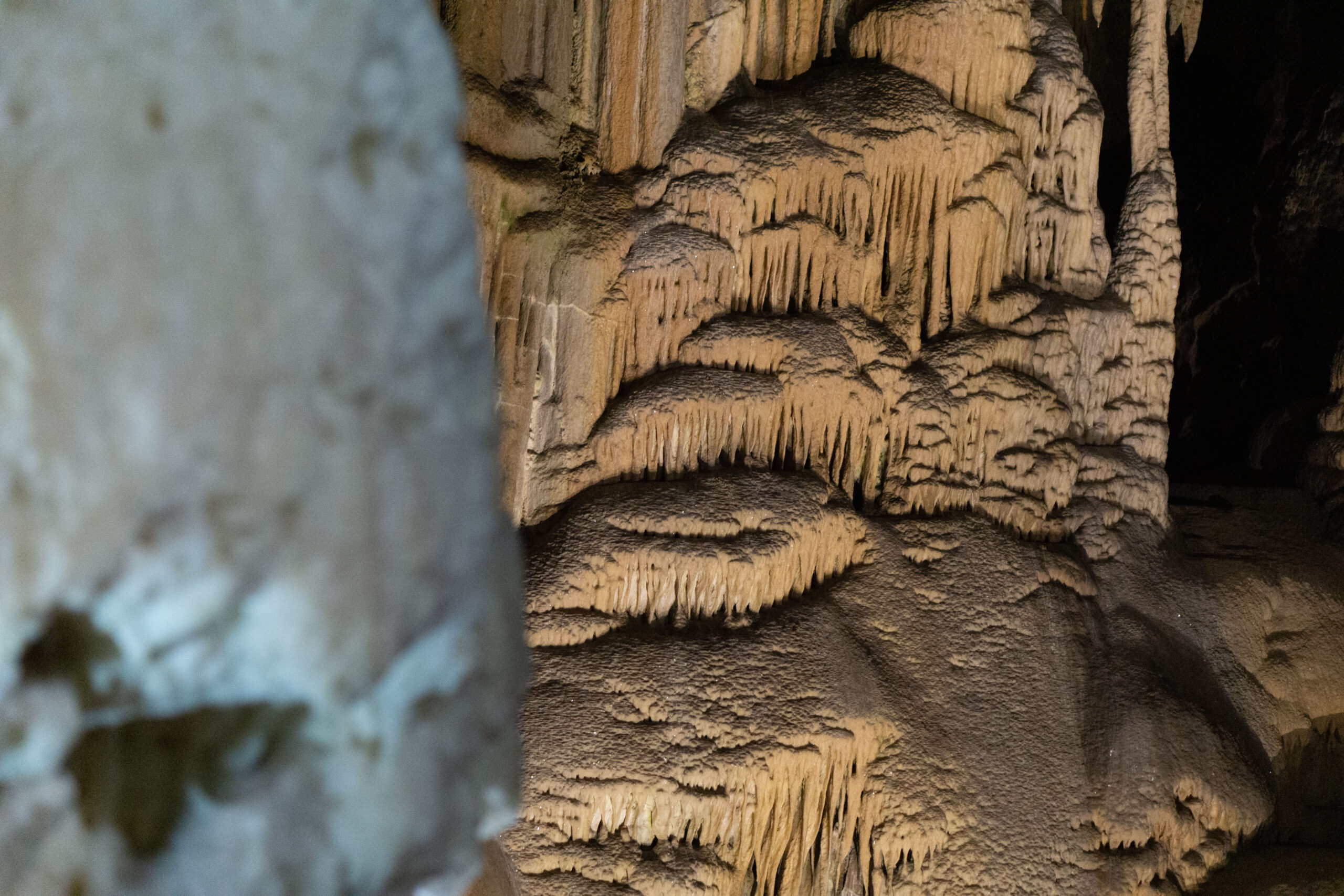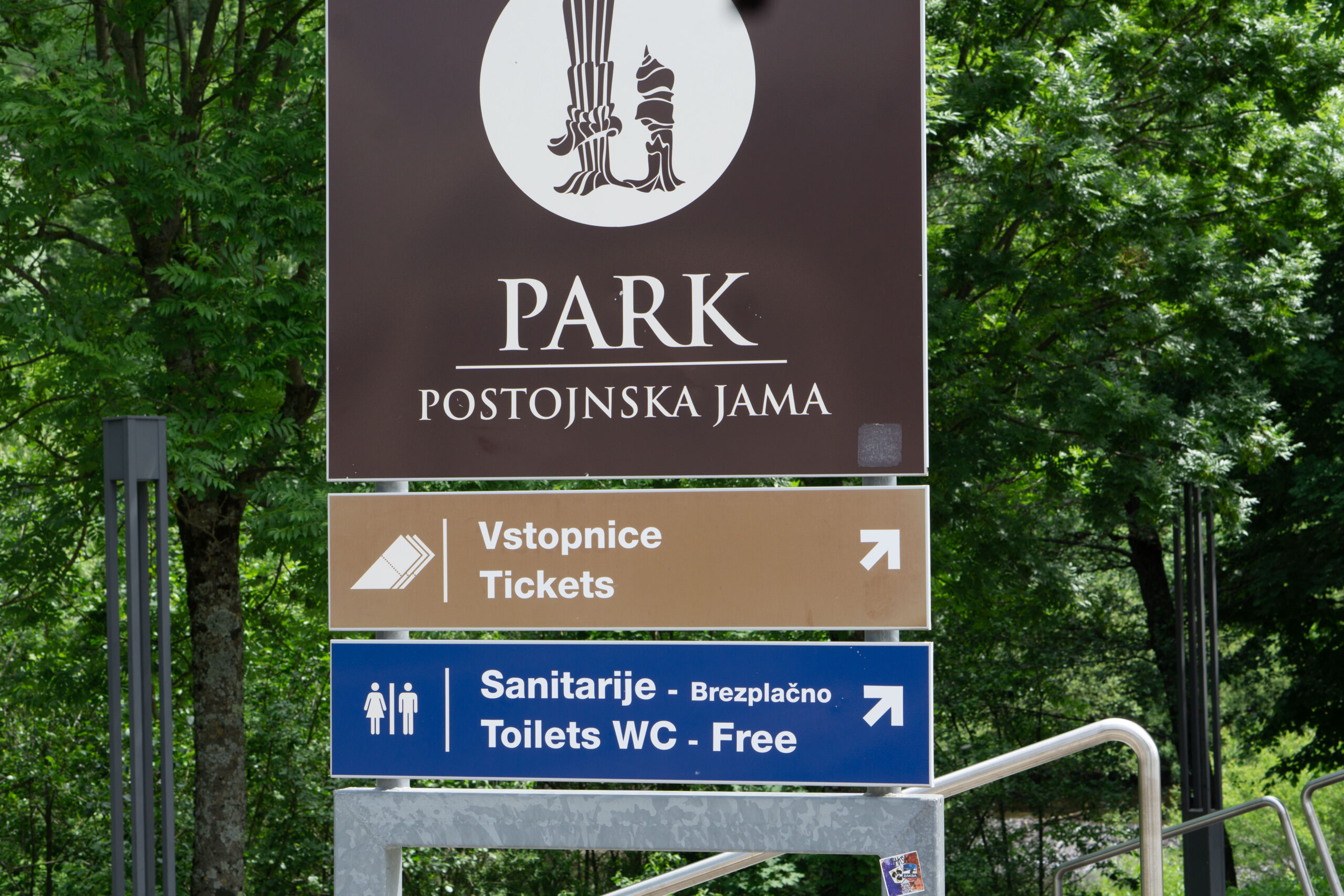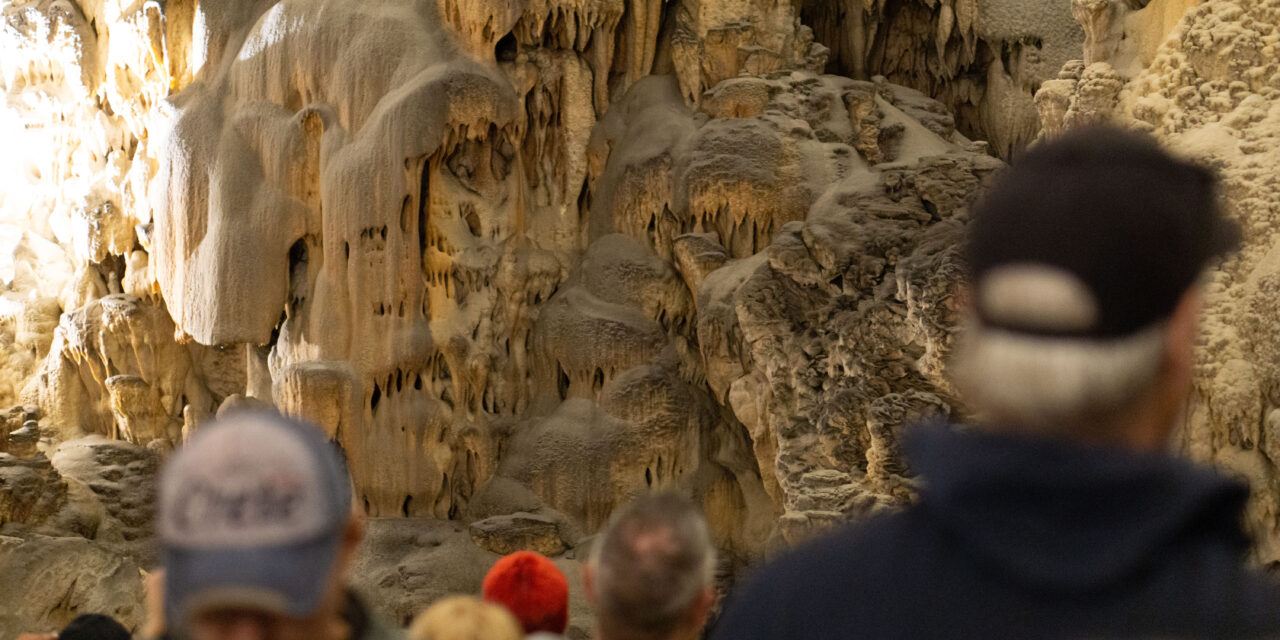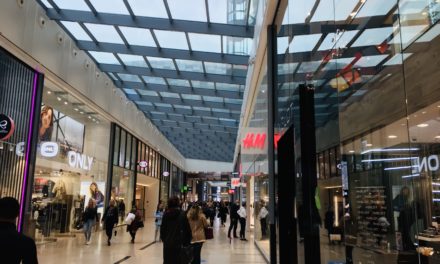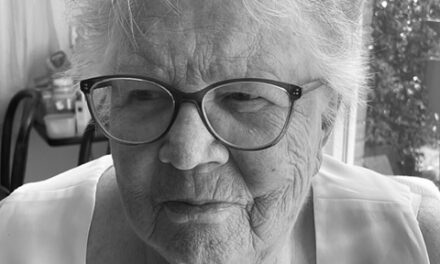Tucked away behind a mass of tourists is Sarah. An unusually somewhat fake-looking smile settles on her face when she sees us strolling by. Most of the times, my instincts are wrong and nothing was less true this time. Sarah turned out to be genuinely enthusiastic about guiding us through the Postojna cave; one of the biggest caves in Europe; and sharing her experience as a cave connaisseur, as she would say. Perhaps because we were a small, modest group of four, she too was more at ease. But probably she was just excited to get out of the burning sun and cool down in the depths of the cave. And thus, a scorching hot day made for an ideal trip through the largest cave in Europe.
A plastic-looking miniature train, which would perfectly fit in the scenery of Disneyland, took us in 10 minutes from the entrance of the cave to the start of our walking tour. Even our guide was not the greatest advocate but could extract the playful, positive from it. “This was not my idea but I must say it saves a lot of energy.”
“Sometimes I get the feeling that; what I say doesn’t matter, they just do what they want regardless of what I tell them.”
Sarah just turned 26 and is starting her 7th month as a guide in the Postojna cave. All her life, she has been carrying what she considers an almost unhealthy passion for everything associated with caves. The world above the surface has never been able to captivate her as much as everything that takes place below the ground. “It is a hidden world. One that we know so little about and where there are so many mysteries. How can you not want to look for the ‘mother dragon’ here in the Postojna cave?”
She is not alone in her obsession about nature; many Slovenes share her love. The evergreen country of Slovenia is home to some beautiful nature. From Ljubljana, being tree city in 2021, to having more than 12.000 caves. A hidden gem. The Postojna Cave stretches out over an area of 24 kilometers and is the haunt of mythical cave dwellers. With as many as 689,608 annual visitors, it is the front runner among the most popular caves for tourists in Slovenia, even Europe.
After its first opening for tourists in 1899, the Postojna Cave Park hasn’t stopped growing in popularity. A little over 80 years after the discovery of the cave, the first tourists were escorted inside. Not by the same miniature train as us, admittedly. Thanks to the growing number of tourists, the park was equipped with a hotel, countless souvenir shops, photobooths and restaurants. In my words, everything that does not really fit into the atmosphere of a cave.
According to Sarah, it is extremely difficult to find a good balance between allowing and refusing tourists. She is often frustrated by the tourists’ inattention and disrespectful attitude towards her and the caves. “Sometimes I get the feeling that; what I say doesn’t matter, they just do want they want regardless of what I tell them. “They touch and damage million-year-old stalagmites and stalactites which interferes with the process.”
“We have a lot of caves that people would love to see. I understand that we can’t open them all and we have to protect them but 20 open caves is almost nothing.”
Andrej Vatovec has been working for his Slovenian tourist agency for years and lives in Postojna himself. When I ask him if he thinks Postojna has a tourist problem, he remains very quiet for a very long time. “Some people here see it as a problem. From my experience we have to stop talking about the problem and start looking for solutions. We will not be able to stop them (tourists), so we have to deal with them in an improved way.” Andrej has seen a huge rise in the number of tourists visiting Slovenia in recent years. “We have gained a lot of recognition in recent years and that is also very beneficial.” People are not in support of closing the caves. On the other hand, they are also not in favor of opening new caves either if that means that towns get overrun by tourists. “We surely don’t need more tourists. We are being swamped already and with even more, it will not be very pleasant to live here.” Reducing the number of tourists by shutting down caves is not ideal either, he says. “The tourists we now have in Postojna come in large numbers, but they are much needed.”
“People don’t seem to understand that you can’t avoid change”
Locals often have a hard time calming their spirits when they talk about the changes the tourists have caused, says Andrej. They are fearful that the village will be entirely transformed to accommodate the influx of tourists. “I understand that you don’t want to live in some sort of amusement park but some people don’t seem to understand that you can’t avoid change.”
According to Andrej, the people show too little gratitude for what the tourists have brought and done for them. They create jobs and thus boost the economy and their lives. Although the Postojna Cave is by far the most visited cave in Europe, it does not enjoy UNESCO protection like other caves in Slovenia. This means that the organization is the only one responsible for the protection of the cave.
Despite all the worries, both Sarah and Andrej see the future of Postojna through rose-tinted glasses. “I can only be happy that more and more people are discovering my passion for caves”, says Sarah. For Andrej, too, the tourists may continue to come. “Without tourists I am out of a job, so for me it is pretty clear that I want them to come and need them to come.”
